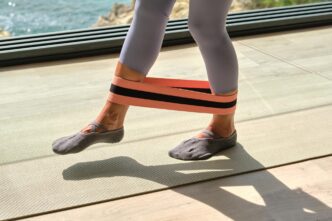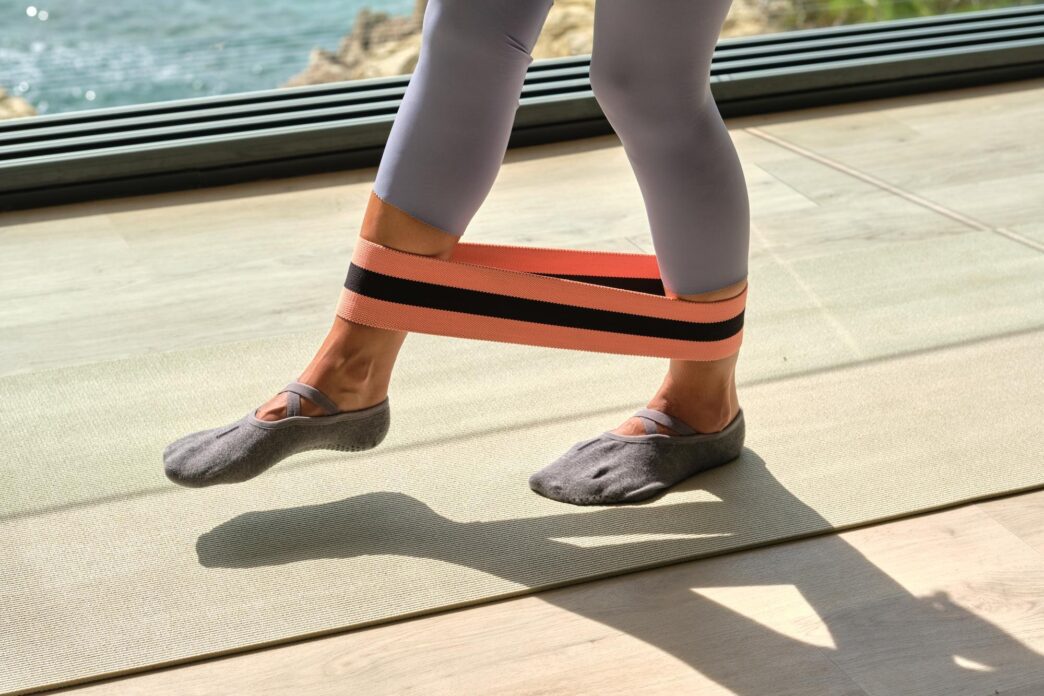A Quick Takeaway
The Story Behind the Trend
How to Make It Work for You
The Community View
Activating your glutes is a cornerstone of overall strength, athletic performance, and injury prevention, and resistance bands offer an accessible, effective way to achieve this. These versatile tools allow anyone, from beginners to advanced lifters, to target the gluteal muscles – the gluteus maximus, medius, and minimus – ensuring they are primed and engaged for movement. Whether incorporated into a warm-up, a standalone workout, or as part of a larger strength routine, resistance bands provide constant tension, making them ideal for waking up dormant glutes and building a stronger, more stable foundation for your body at home, in the gym, or on the go.
Why Glute Activation Matters
The gluteal muscles are among the largest and most powerful in the human body, playing a critical role in hip extension, abduction, and external rotation. Strong, active glutes are essential for everything from walking and running to lifting heavy objects and maintaining proper posture. When these muscles are underactive or weak, other muscles, such as the lower back and hamstrings, often compensate, leading to imbalances, pain, and an increased risk of injury, particularly in the knees and lower back.
Beyond injury prevention, well-activated glutes contribute significantly to athletic performance. They are the primary movers for explosive activities like jumping, sprinting, and changing direction. Engaging your glutes effectively ensures you’re harnessing your body’s full power potential, leading to improved performance in sports and daily functional movements.
The Power of Resistance Bands
Resistance bands are an incredibly efficient and portable tool for glute activation and strengthening. Unlike free weights, which rely on gravity, resistance bands provide constant tension throughout the entire range of motion, forcing your muscles to work harder. This continuous engagement helps to improve muscle recruitment and build endurance.
There are several types of resistance bands, but for glute activation, mini-bands (small loops) and fabric bands are particularly effective. They are lightweight, take up minimal space, and come in various resistance levels, allowing for progressive overload as your strength improves. This makes them perfect for travel, home workouts, or adding an extra challenge to gym routines.
Preparing for Glute Activation
Before diving into exercises, a brief warm-up is crucial to prepare your muscles and joints for movement. Light cardio like marching in place or arm circles, combined with dynamic stretches, can increase blood flow and mobility. When using resistance bands, always prioritize proper form over the amount of resistance. Focus on the mind-muscle connection, consciously contracting your glutes with each repetition to ensure you’re targeting the intended muscles effectively.
Top Resistance Band Exercises for Glute Activation
Here are some of the most effective resistance band exercises to sculpt and strengthen your glutes:
Banded Glute Bridge
Place a mini-band just above your knees. Lie on your back with knees bent, feet flat on the floor hip-width apart, and heels close to your glutes. Drive through your heels, lifting your hips off the floor until your body forms a straight line from shoulders to knees, actively pushing your knees out against the band. Squeeze your glutes at the top, then slowly lower back down. This exercise targets all three gluteal muscles, emphasizing hip extension.
Clamshell
Loop a mini-band around your thighs, just above your knees. Lie on your side with your knees bent at a 45-degree angle and stacked, hips stacked, and feet together. Keeping your feet together and your core engaged, lift your top knee towards the ceiling, rotating your hip outwards against the band’s resistance. Control the movement as you slowly lower your knee back down. This is excellent for isolating the gluteus medius and minimus, improving hip stability.
Banded Lateral Walks (Monster Walks)
Place a mini-band around your ankles or just above your knees. Stand with feet hip-width apart, a slight bend in your knees, and your core engaged. Take small, controlled steps sideways, maintaining tension on the band throughout the movement. Keep your chest up and avoid swaying your torso. This exercise powerfully targets the gluteus medius, crucial for hip abduction and stability.
Banded Squats
Place a mini-band just above your knees. Stand with your feet shoulder-width apart, toes slightly out. Initiate the squat by pushing your hips back and bending your knees, as if sitting in a chair, while actively pushing your knees out against the band. Descend until your thighs are parallel to the floor or as deep as comfortable, then drive back up, squeezing your glutes at the top. The band helps reinforce proper knee tracking and increases glute engagement.
Banded Hip Abduction
Loop a mini-band around your ankles. Stand tall with a slight bend in one knee for balance, or hold onto a stable object. Slowly lift one leg directly out to the side, keeping your toe pointed forward and your core tight. Focus on using your outer glute (gluteus medius) to drive the movement. Control the leg as you slowly return it to the starting position. This move specifically targets the abductor muscles of the hip.
Banded Kickbacks
Anchor a long resistance band to a stable object at ankle height, or use a mini-band around your ankles. Loop the other end around one ankle. Stand tall, engaging your core. Slowly extend the banded leg straight back behind you, squeezing your glute at the peak of the contraction. Keep your torso stable and avoid arching your lower back. Slowly return the leg to the starting position. This exercise effectively targets the gluteus maximus.
Integrating Bands into Your Routine
Resistance band exercises can be seamlessly integrated into various fitness routines. Use them as a dynamic warm-up before a lower-body workout to pre-activate your glutes, ensuring they are engaged from the first set. They can also serve as a stand-alone workout for lighter days or when traveling. For strength training, incorporate them as accessory work after your main lifts to further fatigue and strengthen the glutes. Aim for 2-3 sets of 10-15 repetitions for each exercise, focusing on controlled movements and glute contraction.
Common Mistakes to Avoid
To maximize effectiveness and prevent injury, avoid common pitfalls. Do not use a band that is too heavy, as this can lead to compensating with other muscles and poor form. Resist the urge to rush through repetitions; slow, controlled movements are key for glute activation. Always maintain proper posture and a braced core to protect your spine and ensure the glutes are doing the work. Listen to your body and adjust the resistance or range of motion as needed.
Harnessing the power of resistance bands for glute activation is a smart, accessible strategy for anyone looking to enhance their physical well-being. By consistently incorporating these targeted exercises, you can develop stronger glutes, improve stability, reduce injury risk, and unlock greater athletic potential. Embrace the versatility of bands to build a more resilient and powerful physique, one controlled movement at a time.







